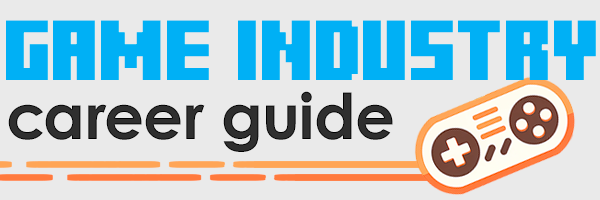What should I put into my video game programming portfolio?
In this episode of Game Industry Career Guide Podcast, I answer a question from Supreeth, who asks, “Hey Jason! Supreeth here, we here in India appreciate all the information provided in you website and I’m a huge fan of your podcast. So, I would feel glad if you could provide me any certain information regarding, How do I make a game programming demo to apply for jobs? How should the demo be? In video format? How do I show my code along with my demo reel?”
In this episode, you’ll learn:
- Why you can’t afford not to have a game programming portfolio
- How to use the “what, why, how” portfolio format
- How to get your own portfolio website and your own domain name
Hello and welcome to the Game Industry Career Guide Podcast. This is episode number 42. I’m Jason W. Bay from GameIndustryCareerGuide.com, and this is the podcast where I answer your questions about getting a job and growing your career making video games.
Today’s question comes from Supreeth, who sent me an e-mail all the way from India to ask this, “Hey, Jason, Supreeth here. We here in India appreciate all of the information provided in your website and I’m a huge fan of your podcast. 🙂 So, I would feel glad if you could provide me any certain information regarding how do I make a game programming demo to apply for jobs? How should the video be? In video format? How do I show my code along with my demo reel?”

Got what it takes? Prove it.
All right. Let’s say you are an aspiring game programmer and you’re just starting out with your job hunt or you’re going to be starting your first job hunt after you graduate. When you apply for a job at a game studio, how can you prove to them that you know what you’re doing? How can you convince them that you do have some game programming skills and that you’d make a strong entry-level game programmer if they just gave you a chance? How do you convince them when you’ve never actually shipped a commercial video game?
Well, if you can’t convince them and they’ve got to be convinced as soon as they look at your application, then you’re not going to get called in for an interview at that studio.
So there is a lot on the line. And that’s where your game programming portfolio comes in. Your programming portfolio is just a simple website that you can reference in your job application that shows your hiring manager what you did and how you did it. The goal is to show off some of your best work to give them enough confidence in you that they’ll move your application forward and contact you for an interview.
Oh, and don’t be intimidated by making a website for your portfolio. If you’ve never done that before, it’s fairly easy and inexpensive using a website builder tool like WordPress and it’s even easy to get your own domain name. Just visit GameIndustryCareerGuide.com/resources for my recommendation on portfolio website hosts.
What’s in a programming portfolio?
Okay, so what’s in a game programming portfolio? For starters, I want to point out that there isn’t any set standard of what a programming portfolio should look like or what’s in it. So you don’t have to worry about getting into any particular layout or format. As long as it gives hiring managers a good overview and a good impression of your work, then the details aren’t as important.
However, to show off your work, you will have to have actually done some work. If you’re in school, then you should have some school projects, like some little tech demos. Or you may have made a small game demo on your own using a game engine like Unity 3D or GameMaker. Your goal should be to have one or more, preferably more, little demos that required you to write some code to create something visual that you can show off in your programming portfolio.
By the way, if you haven’t made a demo yet, I recommend that you get started now. Listen to episode 21 of this podcast to help you get started.
Only include your best work
On the other hand, if you’ve made a whole bunch of different demos, don’t include them all. Put your best foot forward. Just pick the most impressive three, four or five demos to put in your portfolio. You don’t need to put everything in. But in general, once you have some work samples, your portfolio should clearly show three things: It should show the What, the Why and the How of each of your game programming examples.
The What
Let’s start with the “what.” To show the what of your work, your portfolio needs to include the visual output of your demo.
The obvious way is to provide a ZIP file for the hiring manager to download and run your demo executable on her computer. But as you know, your demo might not run on every computer. So that’s a little bit of a gamble. The solution is to create a video showing your demo in action, just in case the hiring manager can’t run it or doesn’t have time to run it. Hiring managers are busy people, so you’ll score points by making it as fast and easy as possible for them to view your work.
Supreeth mentioned a demo reel in his question, and that is a good way to show the what. A demo reel is just basically a short video that shows off some footage of all of your best work, kind of as a montage. I think demo reels are fine and they’re a good way to show a high-level overview of your work. But you’ll still want to do individual videos for the other demos in your portfolio, to give hiring managers a closer look at each demo that you’ve done.
The Why
Next, to show the “why” of your work, your portfolio can include a short paragraph or two that explains what your demo is trying to demonstrate, what you intended to learn by creating it, and what challenges you found and then overcame during development. That helps to put your game demo in context and it shows that you’re a thoughtful, curious programmer that loves a challenge and it highlights the fact that you’ve learned something valuable along the way.
The How
And lastly, your programming portfolio should show the “how” of your work. Now, since you’re a programmer, the how is almost always going to be your source code. No matter how great your demos look, the most important thing is that you’ve written good code so the hiring manager will definitely want to see your source code.
Now, you can let the hiring manager download the ZIP file of your demo source code, or you can show just the important bits right there in the web browser. It’s up to you. As long as they get to see the work you’ve done.
But another common method is to provide a link to your source code in an online source code repository, such as GitHub. I know that as a hiring manager myself, I always appreciate it when applicants have their code in GitHub because then I can browse around and look at their code from all of their projects without having to download anything. It’s just a nice way to store source code for other people to view.
Portfolio power
So, put it all together and you’ve got your programming portfolio. And that’s a great way to think about how to structure it: For each demo you want to include, be sure to show the what, the why, and the how.
I can tell you right now that I have read through the programming job applications of literally hundreds of programmers, and very few of them actually have an online programming portfolio–but the ones that do, really stand out from the crowd.
So I recommend–I highly recommend, in fact–that you do it, too. It’s a great way to catch the attention of hiring managers and pique their interest in bringing you in for an interview. Thanks to Supreeth for e-mailing that excellent question and thank you for spending time with me today to learn how to build your programming portfolio.
If you enjoyed the podcast, then please help me spread the word by writing a review in iTunes or by sharing the podcast on social media. For more information and inspiration on getting a job and growing your career making video games, visit me at GameIndustryCareerGuide.com. I’m Jason W. Bay and I will see you again next week right here on the Game Industry Career Guide Podcast.
Read my new book!
Making games for a living is an incredibly rewarding career, but it’s hard to break in unless you have insider knowledge. This book levels the playing field.


Leave a Reply